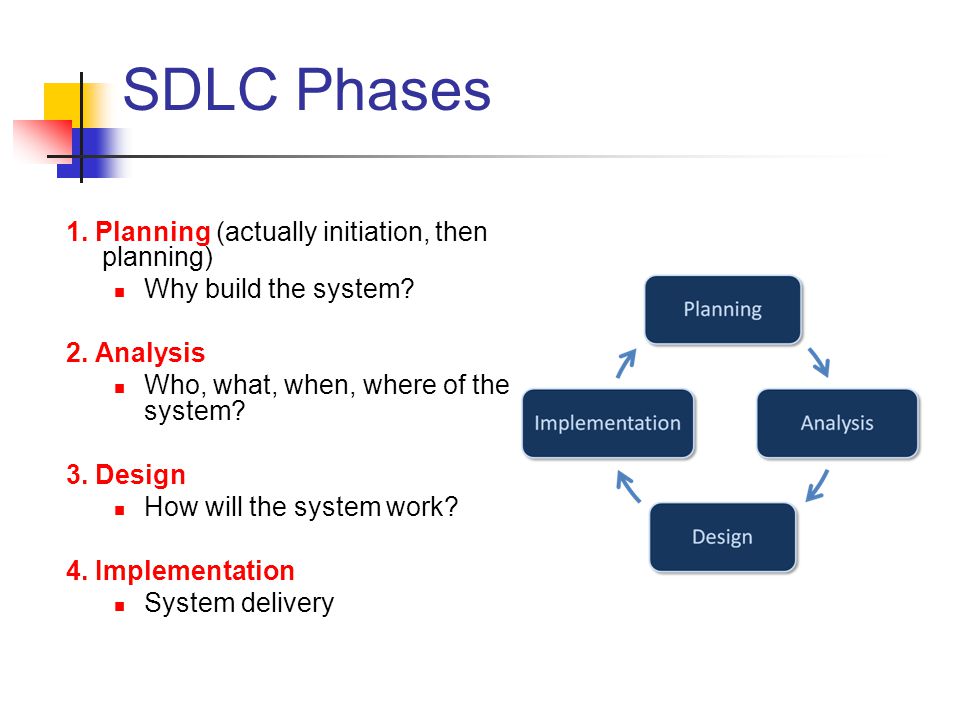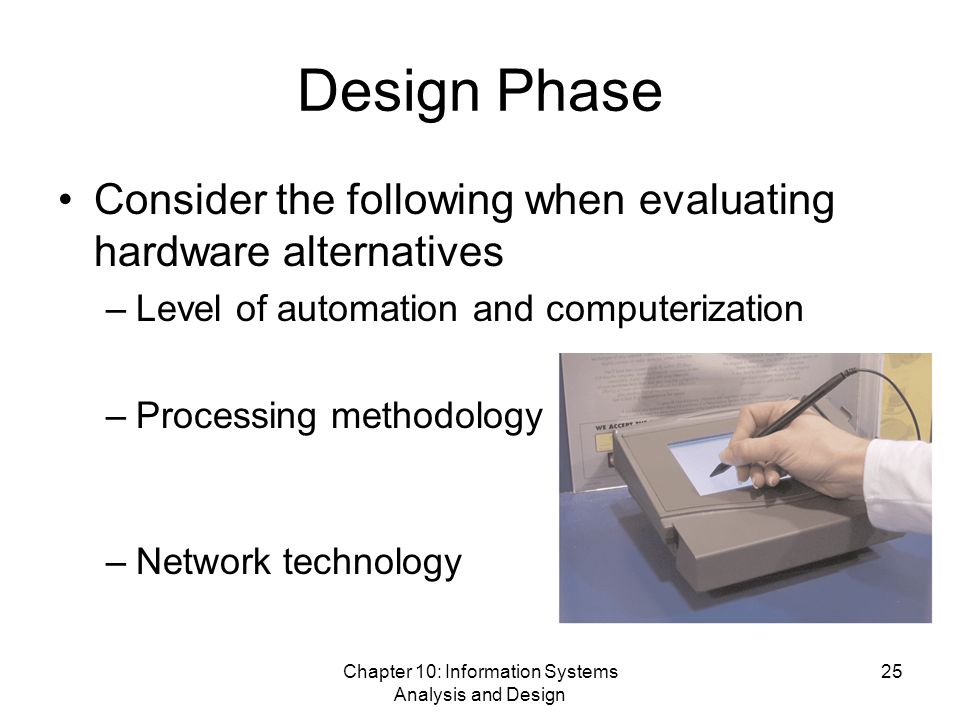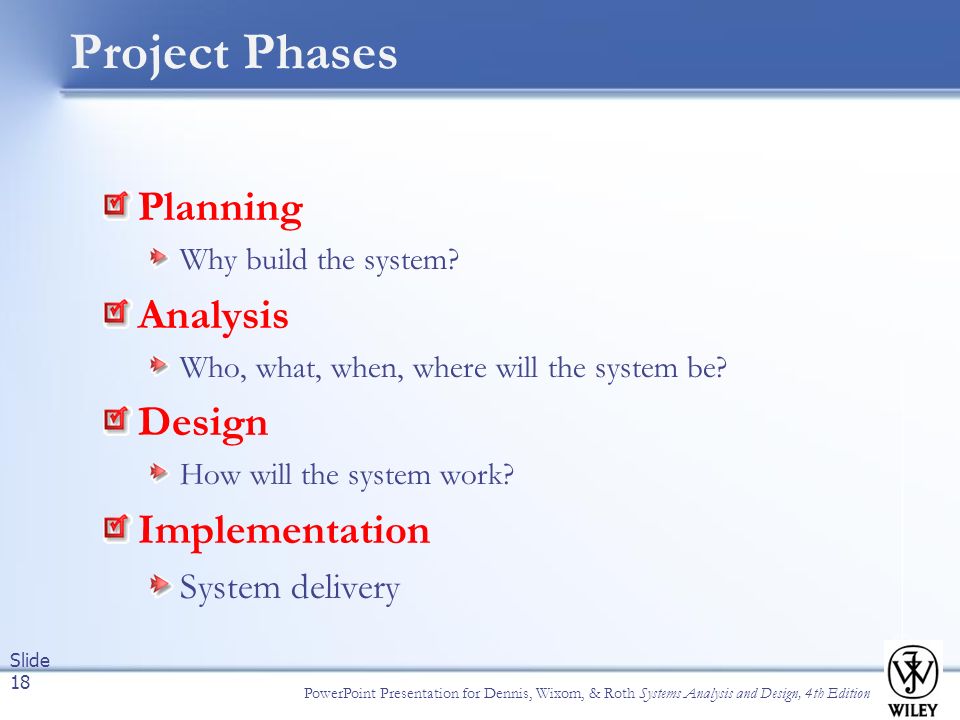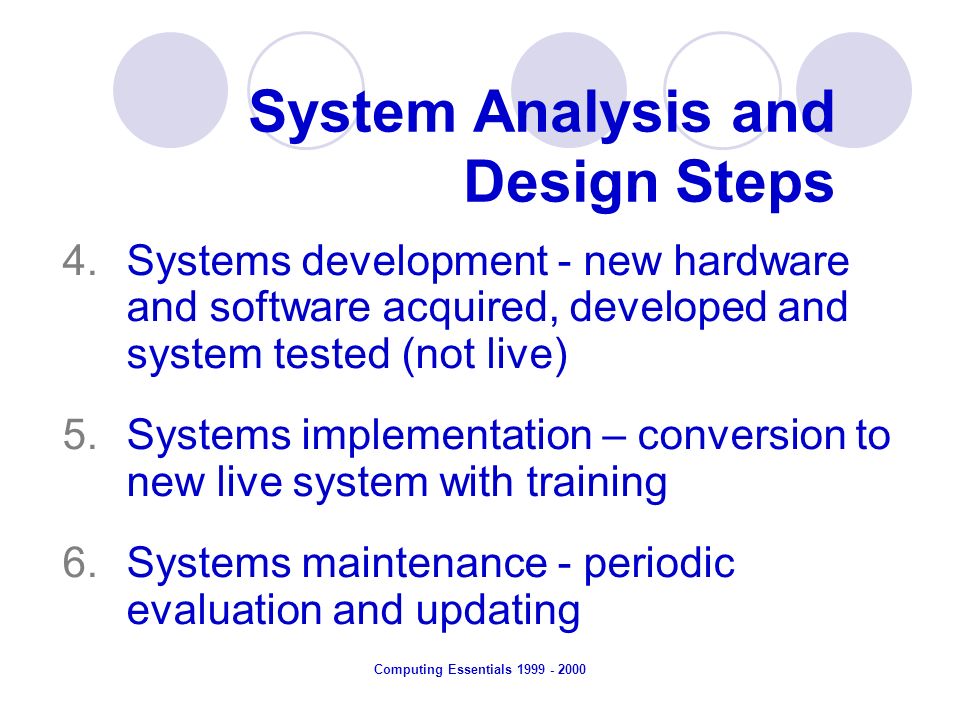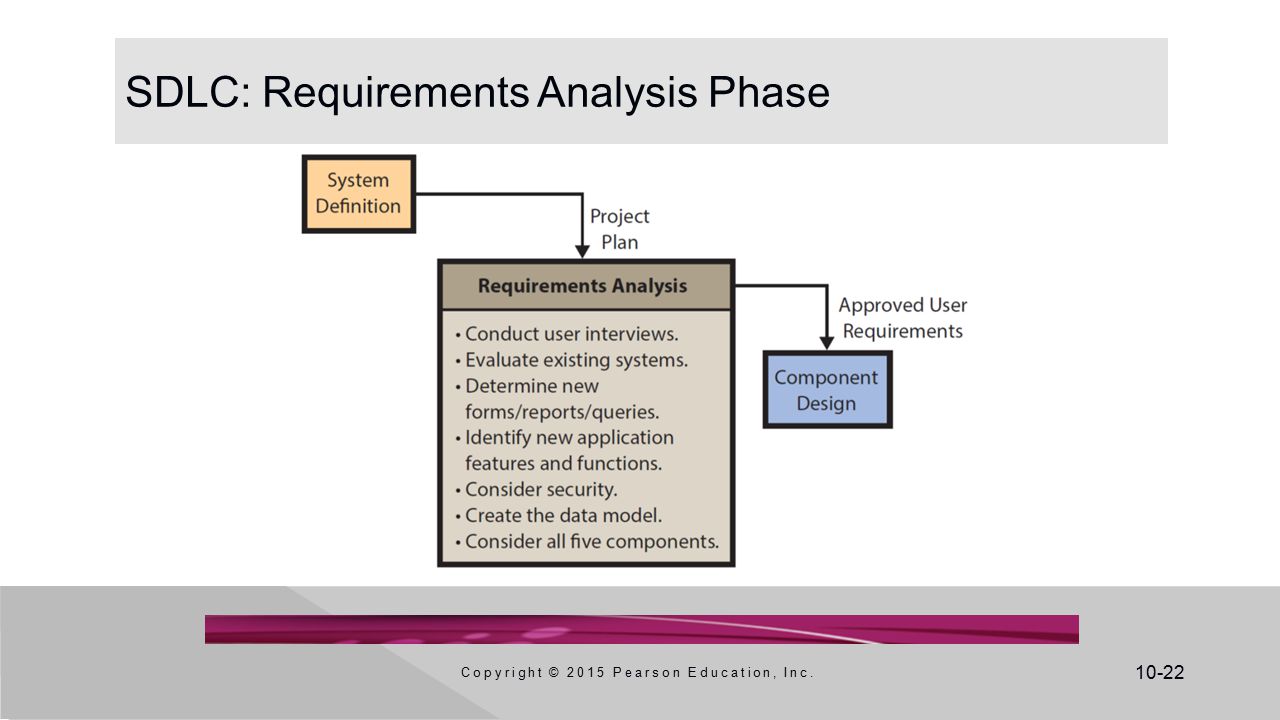SYSTEM ANALYSIS: PHASE 2 Systems analysis is an indepth study of end user information needs, which produces functional requirements that are used as the basis for the design of. Thus, system analysis and design is a process that is used to analyze, design, and implement improvements in the functioning of business that can be accomplished through the use of computerized information systems. Read and Download Information System Analysis Design And Implementation Free Ebooks in PDF format GEOGRAPHY EXAM PAPER OF THE GAUTENG DISTRICT 9 2018 GEOGRAPHY PAPER 1. The social and organizational issues not only, the technical ones, are the critical issues in the implementation of information systems. The health information systems do not effectively hospital information system could not happen without an analysis of the feelings and perceptions of individuals who make use of it (Ndira, Rosenberger, and Wetter, 2008). Our approach to management information system design is based on the modern softwaresystem engineering discipline, which consists of structured analysis and structured design (topdown design). (See the list of references for several books on the modern. 1 INTRODUCTION TO SYSTEM ANALYSIS AND DESIGN 1. 1 INTRODUCTION Systems are created to solve problems. One can think of the sys l System design l Coding l Testing l Implementation l Maintenance The different phases of system development life cycle is shown in Fig. Analysis Analysis is a detailed study of various operations performed by a system and their relationships within and outside the system The objective of analysis is to determine exactly what must be done to solve the problem. the systems logical elements (its boundaries. Information systems are the software and hardware systems that support dataintensive applications. The journal Information Systems publishes articles concerning the design and implementation of languages, data models, process models, algorithms, software and hardware for information systems. Thus, maintenance changes the existing system, enhancement adds features to the existing system, and development replaces the existing system. It is an important part of system development that includes the activities which corrects errors in system design and implementation, updates the documents, and tests the data. Analysis, Design and Implementation 2. Analysis, Design and Implementation SubjectTopicFocus: mSoftware Production Process Summary: definition, analysis System and software design Implementation and unit testing Integration and system testing Operation and maintenance Chapter 1 introduces the systems development life cycle (SDLC), the fundamental fourphase model (planning, analysis, design, and implementation) common to all information systems development projects. It describes the evolution of system development methodologies and discusses the roles and skills required of a systems analyst. Systems Analysis and Design (SAD) is a broad term for describing methodologies for developing high quality Information System which combines Information Technology, people and Data to support The render system component, called XEngineCore, implements the render system of the engine and provides APIindependence from the underlying 3D graphics APIs using renderer libraries that are dyna mically loaded at runtime. Systems Analysis and Design 7 2. Interconnectivity and interdependence must exist among the system components. The objectives of the organization have a higher priority than the objectives of its subsystems. For example, traffic management system, payroll system, automatic library system, human resources information system. Properties of a System Systems Analysis, Design, Selection, Implementation, and Evaluation The process of analyzing existing systems and system needs, of designing and selecting the system to meet those needs, and of the implementation and ultimate evaluation of those systems brings the work of deployment of IT full cycle. 8 Systems Analysis Design; The syllabus says that you should be able to: 8. describe the different methods of system implementation; identify suitable situations for the use of different methods of system implementation, giving advantages and disadvantages of each. The roles of systems analyst is to identify how technology can improve business processes, design new business processes, design the information system, and ensuring that the system conforms to information systems standards. 10 Chapter 10: Information Systems Development Dave Bourgeois and David T. Once the new system is developed and tested, it has to be implemented in the organization. This phase is similar to the preliminaryanalysis, systemanalysis, and design phases of the SDLC. In this phase, the overall requirements for. Implementation is the realization of an application, or execution of a plan, idea, model, design, specification, standard, algorithm, or policy Contents 1 Industryspecific definitions A Simple System Making Lunch Understanding the IT way of Thinking System Is composed of interacting parts that operate together to achieve some objective or purpose. A system is intended to absorb inputs, process them in some way and produce outputs. Information System Analysis, Design and Implementation A. Introduction: One of the most important uses of computers is an aid to managers to provide update information to. second year Information Systems courses focusing on systems analysis (SAC) and systems design and implementation ( SDIC) were revisited to embrace the flipped classroom approach to teach ing. ii ABSTRACT This report describes our group's implementation of a library management system. We used the EntityRelationship model to design a database that will store and organize the library's data. The systemdevelopment life cycle enables users to transform a newlydeveloped project into an operational one. The System Development Life Cycle, SDLC for short, is a multistep, iterative process, structured in a methodical way. The system development life cycle is the overall process of developing, implementing, and retiring information systems through a multistep process from initiation, analysis, design, implementation, and maintenance to disposal. Systems Development Methods Structured Analysis Systems Implementation New system is constructed Systems Support and Security A welldesigned system must be secure, reliable, maintainable, and scalable Most information systems need to be updated significantly or replaced after several years of operation 32 business process modeling are taught in the information systems analysis and design course, data modeling and database design are taught in the database course, networking design is taught in the data communication and networking course, and Answers to Review Questions 1. Systems analysis, phase II of the SDLC, establishes the need for and the extent of an planning, analysis, detailed system, design, implementation and maintenance. What does the acronym DBLC mean, and what does a DBLC portray? DBLC is the acronym that is used to label the. The System Development Life Cycle Model, including system implementation and post implementation activities, is examined. Emphasis is on the specification of the information system's logical and physical analysis and design from a management perspective. A test plan is developed during the analysis phase During the design phase, a unit test plan and a system test plan are developed The actual testing is done during implementation Test plans provide improved communication among all parties involved in testing Systems Analysis and Design: Identify suitable situations for the use of different methods of system implementation, giving advantages and disadvantages of each. 5 Documentation: (a) Identify the components of technical documentation for an information system (b) Information systems analysis and requirements analysis produces a requirements specification. This specification states the project goal and the related data storage, data movement, security, quality, usage, functional and nonfunctional requirements that must be achieved in order to achieve the business goal stated in the business case. defining how the information system should be built (i. , physical system design), ensuring that the information system is operational and used, ensuring that the information system meets quality standard (i. In terms of an information system, prototypes are employed to help system designers build an information system that is intuitive and easy to manipulate for end users. Prototyping is an iterative process that is part of the analysis phase of the systems development life cycle. Systems Design, Implementation, Maintenance, and Review A phase in the development of an IS system that answers the question How will the information system do what it must do to obtain a solution to a problem? Highest in Investigation phase, lower in Analysis Phase, few in Implementation Phase. An information system's functions, which describe its processing aspects, is modeled in the structured systems approach, as dataflow diagrams. Such a model of an information system is, for obvious reasons, referred to as functional model or process model. This involves a range of tasks that can be encompassed within a project cycle framework from identification and analysis of needs, through project formulation and budgeting, to system design, implementation, monitoring and appraisal. Systems analysis and design (SAD) is an important process that creates information systems that support strategic organizational objectives. SAD skills are important and a critical component of. Health management information systems in lower income countries: an analysis of system design, implementation and utilization in Ghana and Nepal. Amsterdam: Royal Tropical Institute. Campbell B, Adjei S, Heywood A. SYSTEMS DEVELOPMENT LIFE CYCLE. System Development Life Cycle A process by which systems analysts, software engineers, programmers, and end users build information systems. The core of the SDLC is based on the standard approach to problem solving. First, you need to figure out or define what the problem is. General Systems Analysis Links. Systems and Systems Thinking Definition of a System A system definition courtesy of the Pentagon. This is the actual image used by Gen. McChrystal, the leader of American and NATO forces in Afghanistan, to portray the complexity of. Systems design is the process of defining the architecture, modules, interfaces, and data for a system to satisfy specified requirements. Systems design could be seen as the application of systems theory to product development. There is some overlap with the disciplines of systems analysis, systems architecture and systems engineering. Evaluation phase taken as a whole, these phases make up what is typically called the information system life cycle. Management Information System Implementation Challenges, Success Key Issues, Effects and Consequences The analysis of the research framework and empirical findings has contributed to a Table 2. 1 Categorisation of Information System (IS) Implementation Challenge These steps are as follows: preliminary investigation, system analysis, system design, system acquisition, system implementation, and system maintenance. Each step is important and builds up on the step(s) that happened previously. In software engineering, system models are depicted using (UML), which is a generalpurpose modeling language designed to provide a standard method to represent the design of a system. UML helps visualize and analyze an information system architecture. In business, System Analysis and Design refers to the process of examining a Overview of System Analysis Design Author: Dr. Looking at a system and determining how adequately it functions, the changes to be made and the quality of the output are parts of system analysis..

